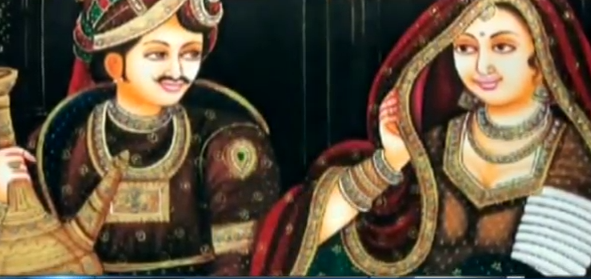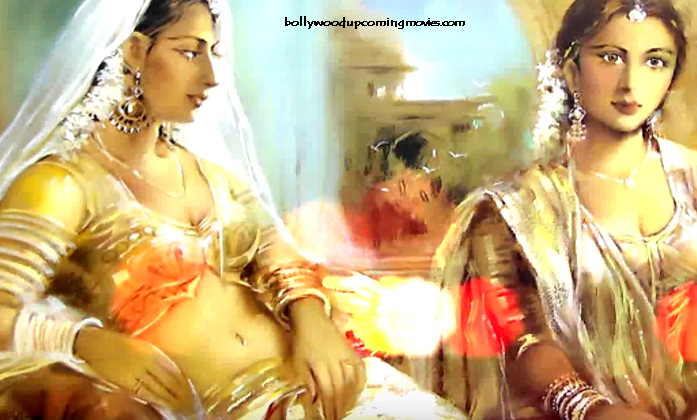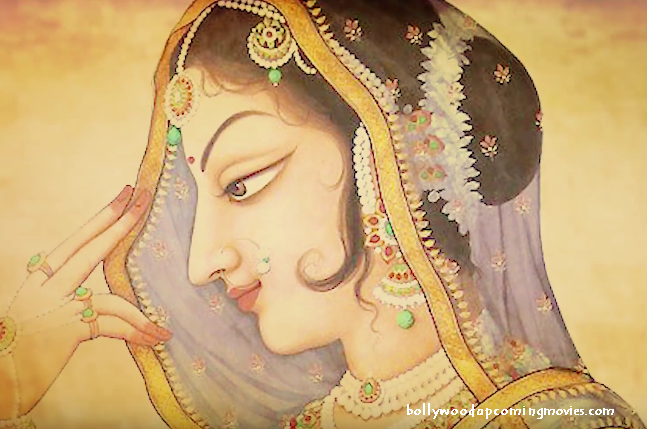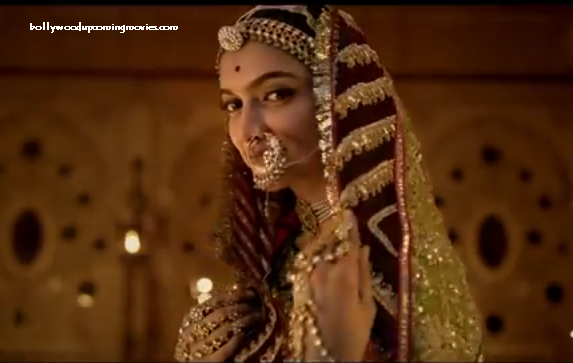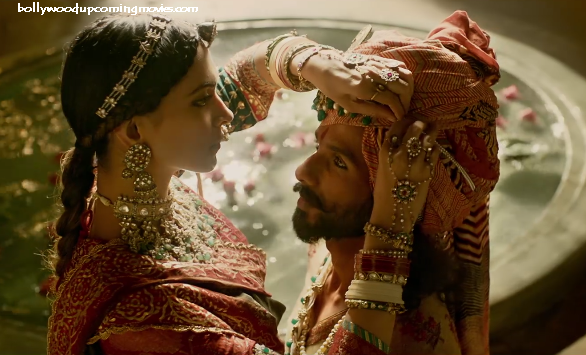Many people are familiar with the poem, Padmavat but not many people know about the person it was written on. Rani Padmavati who was the inspiration behind the poem was a queen who was the wife of King Ratansen of Chittor. The queen who was known across the country for her beauty and grace was the daughter of famous Sinhala king.
Although there has been no concrete evidence about her actual existence, there are some proofs here and there that her existence might not just be fiction. The Padmavat was written by Malik Muhammad Jayasi almost 240 years after her possible “existence”.
Contents
Early life
Rani Padmavati spent her entire childhood under the strict eye of her father, Gandharvsena and her mother Champavati. Anyone who has read Padmavat is very familiar with the talking parrot, Hiramani that Padmavati possessed. There have been not many citations about her childhood and early life in the poem.
Rani Padmavati – Husband Rawal Ratan Singh (Picture)
When she became eligible for marriage, her father arranged a “swayamvar” for his daughter to marry her off to the best suitor. Many kings from all over India came to be a part of the venture but the final count came down to two kings.
The final count came down to Malkan Singh and King Rawal Ratan Singh who was the King of Chittor. King Ratan Singh was already married back then and his first wife was named Nagmati. He defeated Malkan Singh and married Padmavati who became his second wife.
Alauddin Khilji and Rani Padmavati – Story
Alauddin Khilji, the sultan of Delhi who even beheaded his uncle, in his quest to be the ruler, was baffled to see a musician called Raghav Chaitanya, at his durbar. Chaitanya had an axe to grind against Rawal Ratan Singh, the ruler of Chittorgarh. It so happened that he was banished from the court, because he was practicising sorcery which was deemed illegal in Rawal Ratan Singh’s palace. Chaitanya decided that the best way to take revenge would be to talk about the beauty of the queen Padmavati, the wife of Rawal Ratan Singh to the libidinous sultan.
Chaitanya’s plan worked; the sultan set foot with his army to Chittor. He expressed his desire to meet king Rawal Ratan Singh, though the real intention was to check Padmavati out. He told the Chittor king that he also wanted to have a glimpse of the queen, as he considered her, as his sister. Ratan Singh told the king politely that Rajput traditions didn’t allow the ladies to meet men who are strangers, so he would allow him to see her through a reflection. Mirrors were arranged in such a manner that Khilji could only see the queen’s reflection. When he saw Padmavati’s reflection, Khilji was overcome with desire to have the queen at all costs.
Khilji decided that if he had to return to Delhi, it would be with the queen. So he abducted Ratan Singh and sent a message to the Chittor palace that if the subjects wanted to see their king alive, they would have to let go the queen, for his benefit. Rawal Ratan Singh’s trusted lieutants Gora and Badal hatched a plan and replied with their message saying that the queen had expressed her consent to accompany the sultan to Delhi.
Delighted at the prospect of winning Padmavati over, Khilji was counting his minutes, when he realized to his shock that he had been fooled. The palanquins that were supposed to carry the queen and hundres of maids were actually filled with soldiers who ambused Khilji’s men and escaped with their king. In the bargain, Gora and Badal lost their lives but the brave Rajputs tasted victory.
Irked no end by this move, Khilji decided that it was time for a full fledged attack against Chittor. But the fort of Chittorgarh was impregnable. So, Khilji and his vast army cut off essential supplies including food and water to Rawal Ratan Singh’s palace. Though Singh’s palace put on a valiant defence, it was a matter of time before the supplies were short of being exhausted. Ratan Singh and his army of limited men put on a brave fight with the mighty army of Khilji. In the battle that followed, the Rajput soldiers lost their lives. Khilji began to advance with his men to take possession of Chittorgarh and its women.
Rana Padmavati – Death Reason
Rather than face the embarassment and humilation of being subjugated to the whims and fancies of Sultan and his men, the fearless queen Padmavati and the other ladies of the place decided to perform ‘johar’ (immolation). A huge pyre was created, the ladies wore their finest clothing and jewelery. Rani Padmavati jumped in first, followed by the other women, leaving zilch to Khilji and his men.
A large pier was created after digging a hole into the ground where they sacrificed their lives by jumping in it. Rani Padmavati and Nagmati along with several other noble women committed their lives to the act of “Jauhar” when Khilji attacked Chittor and found their ashes burning in the pit in the ground.
Is the Padmavati story, true or false?
The story of Padmavati is based on a poem by Malik Muhammed Jayasi, who wrote it in Awadhi language. There is considerable debate about the historical accuracy of Padmavati’s story; while a few think it is true, the others discount it as mere fable. Many historians believe that the story is exagerrated stating that Khilji annexed Chittor because he wanted to do so, and not because of Padmavati. However, Rajput groups stand by the valiant approach of Rajput ladies and consider Padmavati and her ‘johar’ edifying her as the torchbearer of bravery.
Movie on Padmavati
Director Sanjay Leela Bhansali made a movie ‘ Padmavati’ based on her and Allauddin Khilji, played by Deepika Padukone and Ranveer Singh, respectively.
Rani Padmavati Pictures
Deepika Padukone as Rani Padmavati
